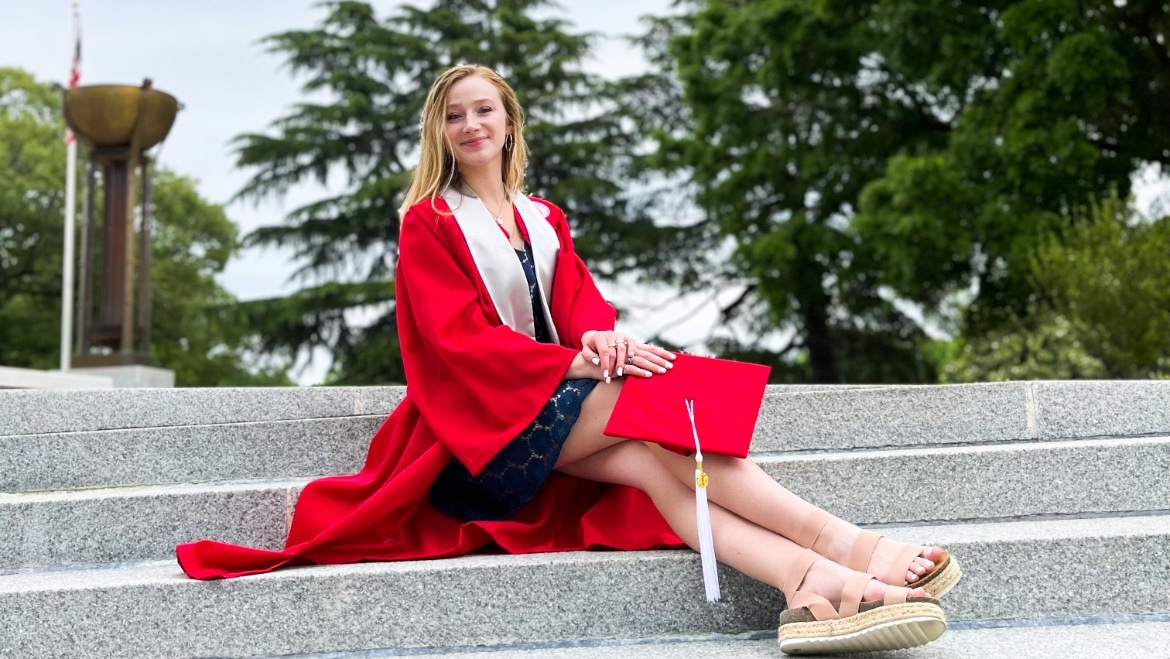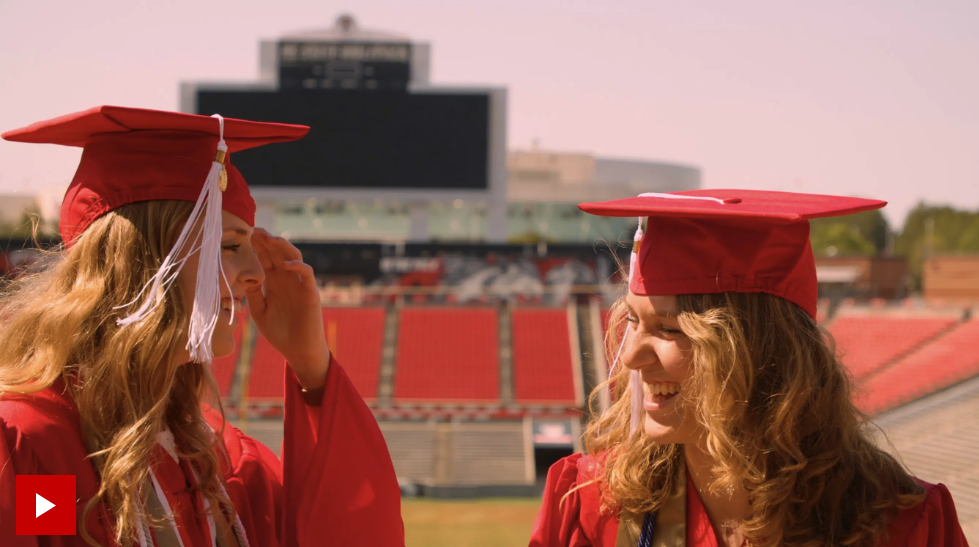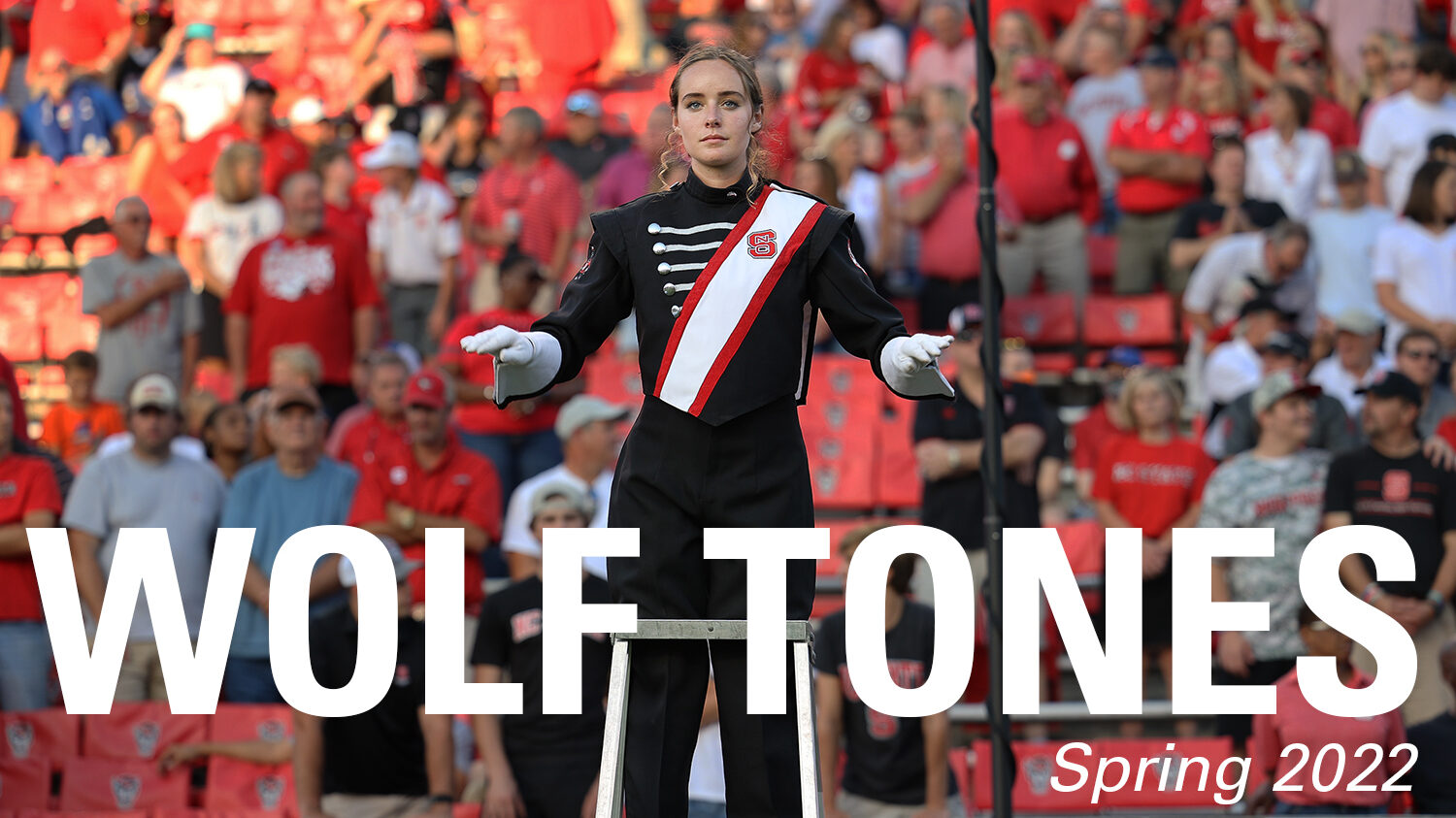Innovation in the piano classroom
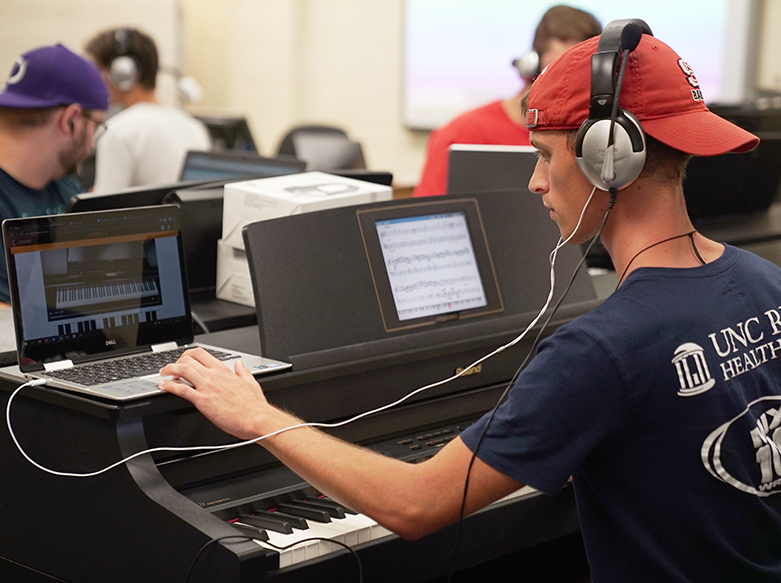
Olga Kleiankina and a development team at DELTA are reimagining the way introductory piano courses are taught for a new generation of students.
As the Department of Music expands its program offerings that explore the intersection between music and technology, faculty are seizing upon opportunities to incorporate new technologies into the classroom and innovate the way that music is taught. In teaching introductory piano courses Class Piano I and II, Director of Piano Studies Olga Kleiankina experienced two major problems with the textbook she was using. First, it was huge and heavy and students often left it at home. Second, its content was rigid and didn’t allow flexibility in her teaching or adaptability to the changing nature of how students today are learning.
“I got to the point where I had to create multiple handouts for every single class, because I felt that the material in the textbook was not sufficient,” Kleiankina said. She found that in teaching piano, which involves both a skill and a language that comes more naturally to some students than to others, the structure of a physical textbook didn’t allow students to move at their own pace or for her to dig deeper into areas that piqued their interests.
“Sometimes I wanted to go in a different direction. I felt that the students would have more interest in jazz chords, for example, and we would spend more time learning in that area,” said Kleiankina. “But the textbook is not that flexible because it only has a number of topics in a certain order. I consider myself to be a creative person and I never follow the textbook page by page. I allow flexibility in my class—as long as we cover everything and we still get to where I want them to be.”
[pullquote cite=”Olga Kleiankina” color=”genomicgreen” align=”alignright”]I think the way people learn is changing. Our process of receiving information has become more interactive.[/pullquote]
So Kleiankina applied for a grant through NC State’s Distance Education and Learning Technology Applications (DELTA) program for assistance building a web-based textbook to better suit the needs of her class. The DELTA Exploratory Grants provide funding to examine a single application or to address a unique instructional challenge in an existing course. The grants are designed for instructors who want to explore emerging technologies and apply then to their teaching, or explore unique challenges in engaging students in learning.
The team at DELTA saw Kleiankina’s project as a unique opportunity to create something that doesn’t currently exist that would solve a problem through the integration of technology into the classroom.
“One of the things that we look for when we’re looking at the grants is something that would advance the goal of the instructor but also advance our skills or our goals here at DELTA,” said Instructional Designer Caitlin McKeown, who served as the project lead. “So we’re always looking at something that would give us a new skill set or allow us to try a new technology or a new approach, and I think this one really allowed us to do that.”
After digging into the challenges faced by Kleiankina in her courses, the team at DELTA began building an app called Piano+ that serves as an interactive textbook. The app combines an extensive and updateable library of piano solos and exercises with live feedback on a student’s playing, strategies for improvement and the ability to annotate the music.
“We wanted to create something that would replace her textbook and be customized to the way that [Olga] taught,” said McKeown. “We wanted to build in additional features that you couldn’t get from any kind of textbook like the feedback based on how you’re playing and the pop-up strategies that will come up to remind you what to focus on as you’re working on this exercise. So we wanted it to guide them through the process of practicing [at home] as well as being able to use it in class.”
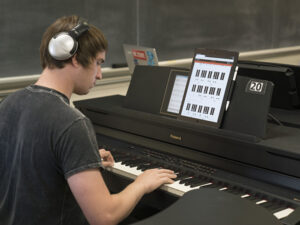 The five person team at DELTA included experts in new media, coding, evaluation and project management in addition to McKeown. The project took a year to complete, and the app was launched just in time for classes to begin in August. Kleiankina served as subject matter expert and developed hundreds of exercises and instructional videos, wrote new piano solos and organized all the materials into a cohesive package. McKeown proved an invaluable asset because her background in music allowed her to serve as a translator between Kleiankina and the development team, understanding and explaining music notation and theory concepts as well as the technical limitations of what could be done in the app.
The five person team at DELTA included experts in new media, coding, evaluation and project management in addition to McKeown. The project took a year to complete, and the app was launched just in time for classes to begin in August. Kleiankina served as subject matter expert and developed hundreds of exercises and instructional videos, wrote new piano solos and organized all the materials into a cohesive package. McKeown proved an invaluable asset because her background in music allowed her to serve as a translator between Kleiankina and the development team, understanding and explaining music notation and theory concepts as well as the technical limitations of what could be done in the app.
“It really was a team effort, creating this app,” said McKeown. “I don’t think we could have done it if we didn’t have this exact combination of people working on it. I was really impressed by the way that it came together and the way that it works. It exceeded my expectations too, even working here at DELTA. Starting out, there were some things where I was like, I don’t think we’re going to be able to do that because music notation is so complex. And they found ways to solve every problem that we encountered.”
Now that they’re using it in the classroom, Kleiankina is able to collect feedback from her students. For Lucas Sanders, a physics and German double major who had no prior piano experience, the app has been a helpful learning aid. “I think it’s been really useful, especially seeing the notes that you’re playing on the staff as you play them,” he said. “It really helps ingrain where those notes are so it’s easier to read the music naturally. And I think it’s a fantastic tool. I think it’s great that there’s so much content on there and it’s just available wherever you have a computer or tablet.”
For music performance minor Gage Fringer, the app has simplified the experience of learning a new instrument. “I think the most useful thing for me with the app is that it centralizes everything that we need for the class,” said Fringer, a computer science major and a trumpet player in the marching band and Jazz Ensemble II. “Whether it be more instruction on something we might not be familiar with, or the fact that it gives us stuff to practice and kind of hone in on the different skills that we’re going over in class, it makes it easy to learn the material when it’s all presented to us.”
The app was designed to be used in a classroom, accompanying lessons and feedback provided by an instructor, rather than for self-study. It’s also designed to be more engaging for students than a traditional textbook.
“I think the way people learn is changing,” said Kleiankina. “Our process of receiving information has become more interactive. Often people expect that something will flash or pop in front of their eyes, and they will receive instantaneous feedback. People shut down when they read a long text, and I think that is a new effect that we’re experiencing because of the technology in our lives. They also need a constant change of activity, and that activity itself modifies their behavior and the way they form an understanding about a concept. This is what compelled me to publish my method not as a traditional textbook but as an interactive app.”
For Kleiankina, even though the app is being used by her students in Class Piano I, it’s still a work in progress. They’ve already started to tweak it based on student feedback and her own hands-on experience, and eventually they’ll add the course materials for Class Piano II and roll it out in those classes as well.
“The approach that I took with this book is very similar to the approach that I normally have as a performer,” said Kleiankina. “You practice the piece over and over and over, and there is always this little spot that you need to tweak. It’s a constant process of perfecting something. But even in that perfecting, at some point you do play really well…and that’s how I will feel about this app. I can constantly shift things and I can constantly improve this and that’s my nature. I’m always looking for something that needs improvement and I would feel really, really constrained with a printed version.” ♫
[callout bodyfontface=”glypha” headingicon=”noicon” textalign=”textcenter” url=”https://performingartstech.dasa.ncsu.edu/about/wolf-tones/” type=”img” bgcolor=”reynoldsred” img=”14615″ mediaposition=”left”]This article first appeared in the fall 2019 issue of Wolf Tones magazine. You can read the rest of the digital magazine here.[/callout]
- Categories:
